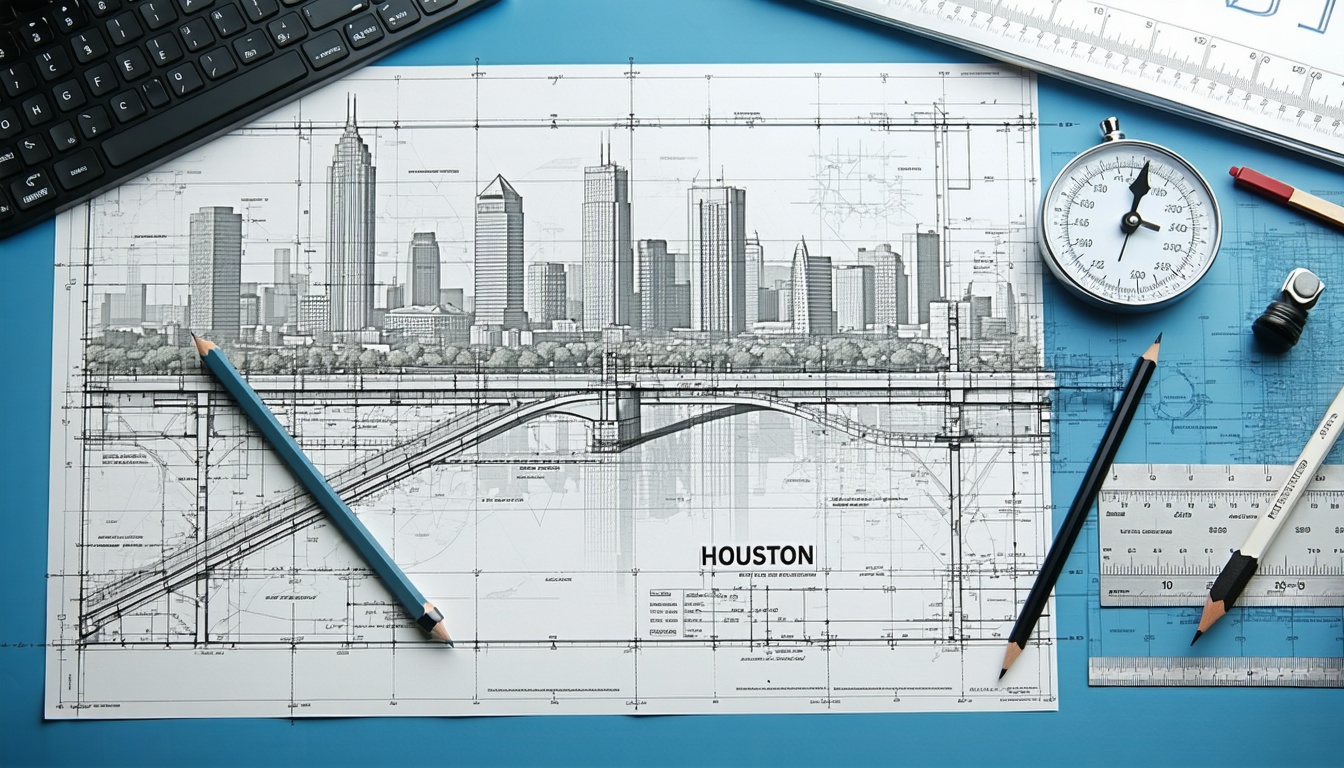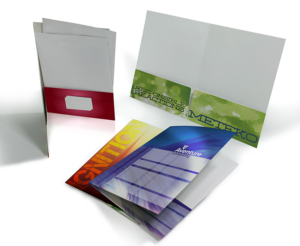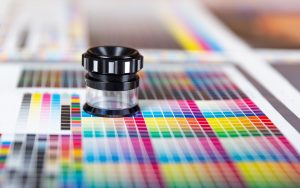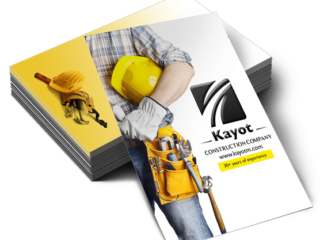Difference Between Engineering Prints and Architectural Prints
When you are working on a project that involves blueprints, understanding the differences between engineering prints and architectural prints is essential. These documents serve distinct purposes and play vital roles in the fields of architecture and construction, especially in Houston, where quality and precision are paramount.
Function and Purpose
Engineering prints focus on the technical specifications and functionality of a project. They include detailed depictions of structural elements, electrical systems, mechanical aspects, and plumbing layouts. They are crucial for ensuring that a project meets safety regulations and technical standards.
On the other hand, architectural prints emphasize the aesthetic and functional design of a building or structure. They showcase the visual representation of spaces, dimensions, and how the design interacts with its surroundings. Architectural prints are often used for presentations and approvals.
Content Differences
| Aspect | Engineering Prints | Architectural Prints |
|---|---|---|
| Primary Focus | Technical specifications and functionality | Aesthetic design and layout |
| Detail Level | High detail on systems (MEP) | Focus on space design and flow |
| Common Elements | Schematics, technical drawings | Floor plans, elevations, renderings |
Formatting and Presentation
Engineering prints often use standardized symbols and conventions to convey technical information clearly. They are typically formatted for precision and clarity, making them easier for engineers and contractors to interpret. Architectural prints adopt a more visual approach, including 3D renderings or artistic representations to convey the overall design vision.
Paper and Print Quality
The quality of the prints is essential in both fields. Engineering prints may require specific types of paper that can handle detailed line work, while architectural prints might utilize higher-quality, colored paper to enhance their visual appeal. Understanding the differences in print quality will help you choose the right blueprint printing services for your project needs.
Choosing the right type of print for your architectural or engineering needs can significantly impact your project’s success. Consider your audience, the purpose of the prints, and the type of information that needs to be conveyed when deciding between engineering and architectural prints. For more insights on effective printing solutions, check out our blueprint printing tips and discover how you can streamline your printing needs in Houston.
Standard Sizes for Engineering Drawings
When it comes to engineering drawings, the size of your prints can significantly affect their usability and clarity. Understanding standard sizes for engineering prints is essential for effective communication in the architecture and construction sectors.
Common Sizes for Engineering Drawings
Most engineering drawings adhere to a set of standardized sizes, which help streamline workflows and maintain consistency across projects. Below is a table outlining the most common standard sizes for engineering prints:
| Size | Dimensions (inches) | Typical Use Case |
|---|---|---|
| A | 8.5 x 11 | General office documents |
| B | 11 x 17 | Design schematics and diagrams |
| C | 17 x 22 | Larger construction details |
| D | 22 x 34 | Architectural plans and layouts |
| E | 34 x 44 | Large format and site plans |
| E1 | 30 x 42 | Custom for specific engineering needs |
These sizes are widely accepted and utilized across various engineering fields. Choosing the correct size not only enhances visibility but also ensures that all necessary details are included and easily interpreted.
Considerations for Choosing Sizes
- Project Requirements: Different projects may need different sizes based on specific details and scale.
- Transportability: Consider how the prints will be used and the space available for transport or display.
- Detail Visibility: Larger prints allow for more intricate details to be visible and easily understood.
When looking for quality printing services in Houston, consider reputable providers who are equipped to handle these sizes effectively. For your needs, explore options for blueprint printing Houston that offer a range of dimensions to suit any project requirement.
For further enhancements in your projects, ensure to check out our blueprint printing tips to ensure your prints meet the intended professional standards.
Common Use Cases (MEP, Civil, Structural)
In the realm of engineering prints, understanding common use cases is essential for maximizing the effectiveness of your technical documentation. Whether you are involved in mechanical, electrical, plumbing (MEP), civil engineering, or structural projects, each discipline has specific requirements and standards that dictate how prints are created and utilized.
MEP Engineering Prints
Mechanical, Electrical, and Plumbing (MEP) prints are essential for coordinating multidisciplinary projects. These prints illustrate the intricate details of mechanical systems, electrical layouts, and plumbing installations within buildings. Key features of MEP engineering prints include:
- Detailed System Layouts: Clear representations of HVAC, plumbing, and electrical systems.
- Coordination: Identifying potential conflicts between systems to avoid costly adjustments during construction.
- Compliance: Ensuring all installations adhere to local codes and regulations.
Table 1: Common MEP Print Components
| Component | Description |
|---|---|
| HVAC Plans | Diagrammatic representation of heating, ventilation, and air conditioning systems. |
| Electrical Layouts | Detailed diagrams showing wiring, outlets, and electrical panels. |
| Plumbing Schematics | Illustration of pipe layouts, water flow, and fixtures. |
Civil Engineering Prints
Civil engineering prints play a critical role in the planning and execution of infrastructure projects, including roads, bridges, and utilities. These prints are designed to convey the project’s scope, specifications, and construction methods.
Key elements of civil engineering prints include:
- Site Plans: Overview of land use, including roadways, drainage, and utilities.
- Grading Plans: Details regarding the elevation and contour of the land for proper drainage.
- Construction Details: In-depth drawings that provide specifications for construction methods and materials.
Table 2: Common Civil Engineering Print Types
| Print Type | Purpose |
|---|---|
| Site Development Plans | Show how a piece of land will be developed or modified. |
| Stormwater Management Plans | Illustrate drainage systems and water management techniques. |
| Structural Plans | Provide details on foundations, retaining walls, and other structural components. |
Structural Engineering Prints
Structural engineering prints focus on the design and integrity of buildings and structures. These prints ensure that structures can withstand various load conditions, including those imposed by gravity, wind, and seismic activity.
Key characteristics of structural engineering prints include:
- Framing Plans: Detailed views of structural frameworks, including beams, columns, and load-bearing walls.
- Foundation Plans: Specifications regarding foundation depth, materials, and reinforcements.
- Connection Details: Guidelines for how different structural elements connect and support each other.
Table 3: Common Structural Engineering Print Elements
| Element | Description |
|---|---|
| Load Calculations | Assessments determining the strength requirements for materials used. |
| Framing Diagrams | Illustrations detailing the arrangement of structural components. |
| Material Specifications | Guidelines for the types and grades of materials to be used in construction. |
These various use cases demonstrate the importance of having high-quality and accurate engineering prints in Houston. When seeking blueprint printing services, it’s crucial to select a provider that understands your specific needs and delivers prints that meet the highest standards of quality and clarity. For more information on obtaining quality prints, visit our page on blueprint printing near me.
Line Weights and Scale Considerations
When creating engineering prints in Houston, understanding line weights and scale is crucial for effective communication and clarity in your designs. Proper representation of these elements ensures that your blueprints convey the necessary information to all stakeholders involved in your projects.
Line Weights
Line weights refer to the thickness of the lines used in your technical drawings. These weights can greatly impact the readability and visual hierarchy of your plans. Different line weights are used to distinguish between primary, secondary, and detail elements within a drawing.
| Line Weight Type | Description |
|---|---|
| Thick Lines | Used for major elements such as walls and structural components. |
| Medium Lines | Indicate secondary components like doors and windows. |
| Thin Lines | Represent minor details, such as hatch patterns and annotations. |
It is important to maintain consistency in the application of line weights to avoid confusion. Often, AEC firms rely on specifications for line weights when printing designs, making it essential to discuss these requirements with your printing service provider. Companies like Catdi Printing ensure that your engineering prints reflect your desired line weights with precision.
Scale Considerations
Scale is another vital aspect to consider. It refers to the ratio of the drawn measurements to the actual dimensions of the object or space being represented. The way you scale your drawings can affect how the details are perceived once printed. Common scales include:
| Scale Type | Ratio |
|---|---|
| 1:1 | Full Scale |
| 1:10 | 10 times smaller than actual size |
| 1:100 | 100 times smaller than actual size |
When selecting a scale, consider the complexity and size of your project. Using a consistent scale across your prints allows for greater accuracy and easier interpretation. Wide format printers, such as those from Stargel Office Solutions, can execute designs with both precision and clarity, ensuring that your scale considerations meet the needs of your architectural or engineering plans.
By paying close attention to line weights and scale details, you enhance the effectiveness of your engineering prints. Whether engaging in blueprint printing for architects or other related services, ensuring clarity in these elements is fundamental to successful project execution. For more information on best practices, consider reading our blueprint printing tips.
Paper Options for Technical Plans
When selecting paper for your engineering prints in Houston, you have several options tailored to meet the specific needs of your architectural and construction projects. Understanding these options can help you choose the best material for your prints, ensuring durability and clarity. Below, you’ll find detailed information on various paper types suitable for blueprints.
Blueprint Bond Paper
Blueprint bond paper is the most common choice for engineering and architectural plans. It is designed specifically for high-quality printing, providing a durable surface that can withstand handling on job sites. This paper is typically thicker than standard printing paper, ensuring that details remain sharp and clear.
Vellum Paper
Vellum paper is another option that offers a translucent finish, making it ideal for layering designs or presenting ideas in a soft light. It is particularly beneficial when you need to trace over plans or review multiple layers without reducing the visibility of underlying details.
Recycled Paper
If environmental sustainability is a priority for you, consider choosing recycled paper. Many printing services, including eco-friendly printing options in Houston, offer recycled blueprint papers that maintain quality while being gentle on the environment. This choice aligns with growing industry standards promoting sustainable practices.
Lightweight vs. Heavyweight Paper
When selecting paper, consider whether your project requires lightweight or heavyweight options. Lightweight paper is often easier to handle and distribute, while heavyweight paper provides added durability, making it suitable for plans that will undergo frequent use or need to be kept for extended periods.
| Paper Type | Thickness | Best For |
|---|---|---|
| Blueprint Bond | 20 lb – 24 lb | General engineering prints |
| Vellum | Varies | Overlaying designs |
| Recycled | 20 lb – 24 lb | Eco-friendly projects |
| Lightweight | 18 lb – 22 lb | Easy handling |
| Heavyweight | 24 lb – 36 lb | Long-term durability |
Catdi Printing offers a range of high-quality print formats using these papers, ensuring your architectural and engineering ideas are conveyed with precision. For more details on paper types and what best suits your project needs, visit our article on blueprint paper types.
By understanding the different paper options available, you can enhance the presentation of your engineering prints. Each choice can significantly impact how your plans are received by clients and contractors alike. For further insights into printing processes and other related services, check out our guide on blueprint printing process.
Color-Coding for Engineering Plans
Color-coding is an essential feature for engineering prints in Houston, as it enhances the clarity and understanding of complex plans. By using color-coding, you can differentiate between various components, systems, and phases of a project. This approach proves to be especially useful when coordinating efforts among teams, such as architects, engineers, and contractors.
Benefits of Color-Coding
- Improved Clarity: Different colors can represent various systems or materials, making it easier for team members to identify critical information at a glance.
- Enhanced Communication: Color-coded plans facilitate better discussions and decisions, as everyone can quickly understand the components being referenced.
- Error Reduction: By visually distinguishing elements, you can minimize misinterpretations that could lead to costly mistakes.
Common Color-Coding Practices
Here’s a table summarizing common color codes used in engineering prints:
| Color | Represents |
|---|---|
| Red | Electrical systems |
| Blue | Water and plumbing |
| Green | Landscaping and vegetation |
| Yellow | Gas lines |
| Orange | Temporary construction elements |
| Purple | Telecommunications |
These color codes help streamline the design process and ensure everyone involved understands the project’s scope. This is vital for effective project management, especially when working on large and complex construction endeavors.
Implementation Tips
When implementing color-coding in your engineering prints, consider the following tips:
- Establish a Standard: Create a consistent color-coding scheme that all team members can adopt. Document this scheme so everyone understands its significance.
- Use Color in Legends: Always include a legend on your prints to explain the meaning of each color. This will ensure clarity for all users.
- Be Mindful of Color Blindness: Consider using patterns or textures in conjunction with colors for team members who are color blind.
For a seamless printing experience with your engineering prints in Houston, it’s advisable to collaborate with a reliable printing service that understands color-coding and can offer valuable blueprint printing tips.
File Types Used in Engineering Prints
When you’re considering engineering prints in Houston, understanding the various file types used in creating blueprints is crucial. Different formats serve different purposes in the architecture and construction industries. Below, you will find an overview of the most common file types used for engineering prints.
Common File Formats
| File Type | Description | Use Case |
|---|---|---|
| Portable Document Format is widely used for sharing high-quality documents. It preserves the layout of the original document. | Sharing final prints and ensuring consistent appearance across different devices. | |
| DWG | A proprietary binary file format used for storing two and three-dimensional design data and metadata. | Used by CAD software for creating detailed designs and architectural blueprints. |
| DXF | Drawing Exchange Format allows for data interoperability between CAD software. | Facilitates file sharing and collaboration across different design platforms. |
| STL | Standard Tessellation Language is commonly used for 3D printing and computer-aided design. | Ideal for 3D modeling and prototypes that require manufacturing. |
| SVG | Scalable Vector Graphics is an XML-based vector image format used for two-dimensional graphics. | Great for logos, line drawings, and illustrations needing scalability without loss of quality. |
These file types cater to different needs, from sharing final prints to collaborating on designs. By selecting the appropriate format, you can ensure that all stakeholders can view and utilize your prints effectively.
Importance of Choosing the Right File Type
Choosing the right file type can greatly influence the ease of collaboration and execution of your projects. For instance, while PDFs are perfect for sharing and printing, formats like DWG and DXF are essential when it comes to editing and detailed design work. Understanding these distinctions is beneficial for business owners in the fields of architecture and construction.
If you are interested in learning more about various aspects of blueprint printing, be sure to check our blueprint printing tips or explore services like CAD printing in Houston and fast blueprint printing.
Engineers We Serve in Houston
In Houston, there are numerous engineers who rely on precise and reliable printing services for their architectural and engineering projects. Catdi Printing offers tailored solutions for various engineering disciplines, ensuring that your blueprints are produced with the utmost accuracy. Below are some of the key engineering fields that benefit from our printing services.
| Engineering Discipline | Description |
|---|---|
| Civil Engineering | Involves the design, construction, and maintenance of infrastructure like roads, bridges, and buildings, requiring detailed and precise engineering prints. |
| Mechanical Engineering | Focuses on designing mechanical systems, including machines and tools, often needing detailed schematics that must be printed accurately. |
| Electrical Engineering | Encompasses drafting electrical systems for buildings and electronic devices, demanding clear layouts that convey complex information efficiently. |
| Structural Engineering | Involves analyzing and designing structures that can withstand loads, where precision in the prints is critical for safety and functionality. |
| Environmental Engineering | Deals with projects aimed at improving environmental quality, requiring detailed plans and compliance documentation that must be accurately printed. |
Our printing services cater specifically to blueprint printing for architects and blueprint printing for developers, ensuring that you have all the resources needed for successful project execution.
When you choose Catdi Printing, you benefit from customized blueprinting services that emphasize precision and quality. Every detail is critical in conveying intricate project specifications. Be sure to explore our options for fast blueprint printing in Houston and rush blueprint printing for urgent requests. We are equipped to handle diverse printing needs, and our range of sizes accommodates various project scales. For more information on pricing and processes, check out our guide on blueprint printing cost in Houston and our detailed overview of the blueprint printing process.
Catdi Printing is committed to assisting engineers, architects, and developers in turning their visions into reality by providing the high-quality prints necessary for effective project management. Your engineering prints are a foundation for success in your projects. For tailored printing services in Houston, learn more about our offerings.
Blueprint Packages for Projects
When it comes to handling your architectural and engineering needs, selecting the right blueprint package is essential for streamlining your projects. Whether you’re a small business owner or part of a larger firm, having a tailored solution can make a significant difference in efficiency and accuracy. Here’s what to consider when choosing a blueprint package in Houston.
Available Packages
Several printing services in Houston offer customized blueprint packages that cater to various project requirements. Understanding the options available can help you make an informed decision.
| Package Type | Features | Ideal For |
|---|---|---|
| Basic Package | Standard prints, minimal revisions | Small projects or preliminary designs |
| Enhanced Package | Multiple revisions, color options | Medium-sized projects needing precise alterations |
| Premium Package | Highest resolution, comprehensive support | Large projects requiring utmost detail and accuracy |
For more detailed specifications on available services, consider exploring options such as blueprint printing near me.
Precision and Quality
It’s crucial that the precision of your prints conveys intricate details accurately. Services like Catdi Printing offer tailored blueprinting solutions designed for engineering projects that demand high accuracy. Similarly, Thomas Printworks ensures quality output with a quick turnaround time.
Customization Options
Your blueprint package can also include customizable elements. Think about whether you need different paper types, color encoding, or additional features like variable data printing. ImageSet specializes in digital print-on-demand services, which can be particularly beneficial for projects with unique specifications.
Cost-Effectiveness
Understanding the costs associated with various packages is key. Engaging in discussions with providers can often yield flexible pricing options. For inquiries on specific blueprint printing costs, you may want to check out blueprint printing cost houston for additional insights.
By evaluating these aspects, you can select a blueprint package that aligns with your project goals, enhances workflow efficiency, and fulfills the specific needs of your architectural or engineering tasks in Houston. For further information on how to navigate the printing process, refer to our guide on how to print blueprints houston or consult our list of blueprint printing tips for best practices.
Order Your Engineering Prints from Catdi
When you need high-quality engineering prints in Houston, Catdi Printing is your go-to solution. Our blueprinting services are designed specifically for the architectural and construction industries, ensuring you receive precise and detailed print formats tailored to your unique project requirements. Whether you require black & white or color printing, we have the options to suit your preferences, using top-notch blueprint bond paper for durability and quality (Catdi Printing).
Why Choose Catdi for Your Engineering Prints?
| Feature | Description |
|---|---|
| Precision | Our services emphasize accuracy in conveying intricate details essential for your projects. |
| Durability | We utilize quality blueprint bond paper to withstand the rigors of construction and review processes. |
| Customization | Choose from various sizes and formats to ensure your prints meet the specific needs of your projects. |
| Affordability | We are committed to delivering high-quality prints without compromising your budget. |
Catdi understands the importance of every detail in transforming your architectural and engineering visions into reality. Our blueprinting services serve as the first crucial step in setting the groundwork for your ideas (Catdi Printing). We recognize that each project has its own scale and requirements, which is why we offer varied sizes for your blueprinting needs.
How to Place Your Order
Ordering your engineering prints with Catdi is straightforward. Simply follow these steps:
- Visit our website to explore our services and options available for blueprint printing in Houston.
- Choose your format – Select between black & white or color prints based on your project’s requirements.
- Specify the dimensions of your prints to ensure they meet your specific standards. If you’re unsure, our team can assist you in selecting the appropriate sizes.
- Upload your files through our user-friendly platform. Ensure your drawings are ready for print and meet our specifications.
- Request a quote – We pride ourselves on transparent pricing. You can review costs before finalizing your order.
- Finalize your order – Confirm your selections and receive your engineering prints promptly, with options for rush printing if needed.

Need to order blueprints? Let’s chat!
At Catdi, we’re dedicated to meeting your blueprinting needs with precision and care. Trust us to transform your ideas into tangible reality through our exceptional printing services.
Ready to get your project on the road? Get a quote today and experience the difference.
















